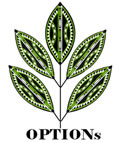Solanum incanum
Fact sheet about Solanum incanum
Distribution and habitat
Solanum incanum is indigenous to Kenya and is normally abundant, around houses, in overgrazed grassland and on roadsides. It is also found at forest edges and in bush land and grassland, from sea-level to 2500m altitude. It is considered an indicator for low-fertility soils.
Flowering and fruiting habits
It is a soft shrub up to 1.8 m tall. Leaves are alternate, ovate with wavy margins with green grey upper surface and green white lower surface. Flowers are pale to deep blue to purple. Fruits are mottled green and yellow when ripe. In Kenya, flowering occurs from November to March.
Uses other than pesticidal
Medicinal- The fruits of S. incanum are used in Kenya for the treatment of skin mycotic infections.
Soil fertiliser- The leaves and stems are useful as green materials in compost.
Other- Fruit juice is used to clot milk by the Samburu people in Kenya.
Propagation and cultivation
Ideally, the seeds should be soaked for 24 hours before sowing as this increases germination rate to above 75%. (Unpublished data, ICRAF 2012).
Seed collection & Storage
Ripe yellow fruits are hand collected from the tree branches using secateurs. Fruits are dried under shade at a temperature of 35°C for two days. Extraction is started as soon as the fruit turns brown, fruits are squeezed between the fingers, crushed and seeds removed, the seeds are washed in running water to clear off the pulp and spread on open trays to dry.
Seed storage behaviour is orthodox; viability can be maintained for over 1 year in air-dry hermetic storage at 5oC at a moisture content of 6-8%.
Parts used
Ripe fruits
Preparation
Whole dry, ripe fruits are crushed and extracted in water at 5% w/v for 24 h and sprayed at 5L/animal
Uses
Surface application
Target organisms
Against cattle ticks

